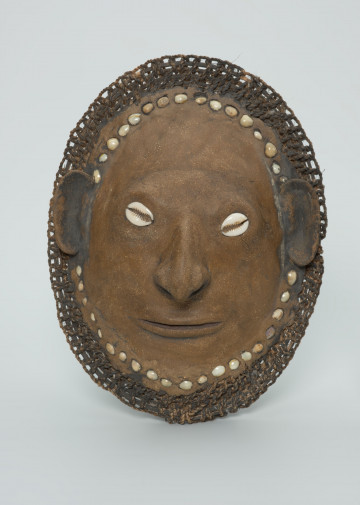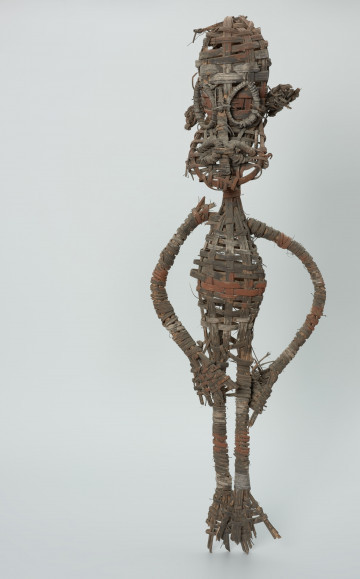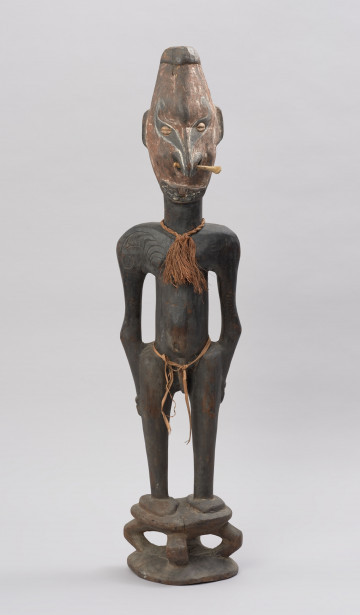
Tortoise-shell mask of ancestor
około 1980 — 1985
National Museum in Szczecin
Part of the collection: Art of Papua New Guinea
One of the most valuable exhibits of the National Museum in Szczecin is a skull mask ior from New Britain, an island of Melanesia belonging to Papua New Guinea, dating from the end of the 19th century. It is a unique object, and it is estimated that only 50 objects of this type have survived worldwide. The ior mask is a product of the Tolai (Gunantuna) ethnic group. The facial part was made from a human skull. The facial features were modelled with clay and thick nut paste mixed with resin. The red and white pattern, which reproduces the tattoo of the deceased indicating his clan affiliation, was painted with natural dyes. Tolai men belong to one of two secret societies - Iniet and Dukduk. Young adepts must pass an initiation that consists of several levels to become members of one of them. Among the highest levels is the technique of mask making. Members of the Iniet association wore skull masks during battle and the dance of death. It was believed that the mask-wearing warriors and dancers became their ancestors and absorbed their strength, wisdom and prowess. According to some accounts, ior masks were also made from the skulls of enemy chiefs and warriors, famous for their valour, strength and courage. The cult of skulls in Melanesia stems from the belief that death is not the end of a human being; what remains is the power and knowledge located in the head. The ancestors do not depart into the afterlife but remain in their community. They are omniscient and omnipresent, thanks to which the living can benefit from their knowledge, count on their support and even concrete help. The skulls of the ancestors were powerful magical objects, subject to many prohibitions, and only initiated men had access to them. They were kept in so-called Spirit Houses, temples, where they hung on hooks or stood on shelves, forming galleries. It was believed that the strength and wisdom released from the heads of the dead would bring prosperity and success to the entire village. The colonial authorities in New Britain banned the making and using skull masks, which caused the tradition to disappear. Today, ior masks can only be found in museum collections.
Katarzyna Findlik-Gawron
Author / creator
Dimensions
cały obiekt: height: 26 cm, width: 15,2 cm
Object type
cult object, ceremonial mask
Creation time / dating
Creation / finding place
Identification number
Location / status

około 1980 — 1985
National Museum in Szczecin

1951 — 1995
National Museum in Szczecin

1951 — 2000
National Museum in Szczecin
DISCOVER this TOPIC
Castle Museum in Łańcut
DISCOVER this PATH
Educational path